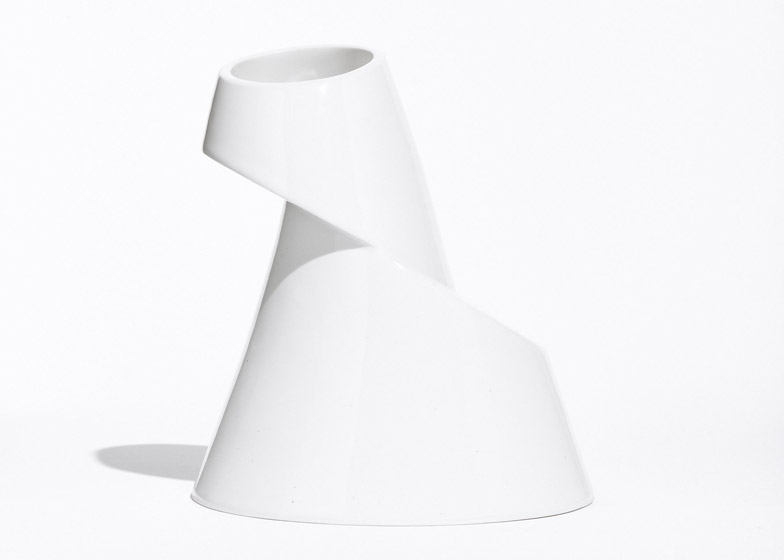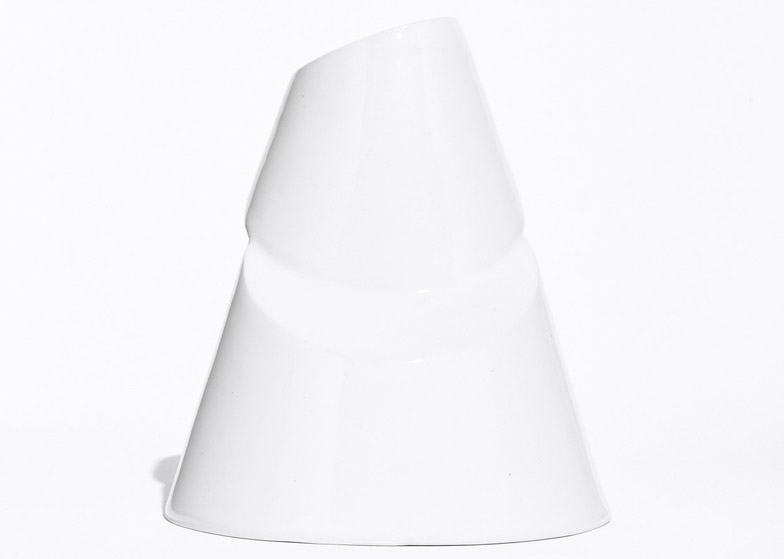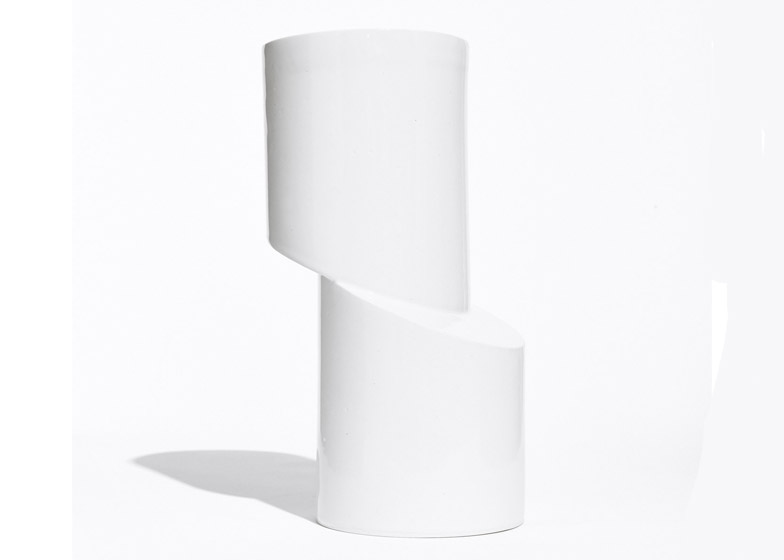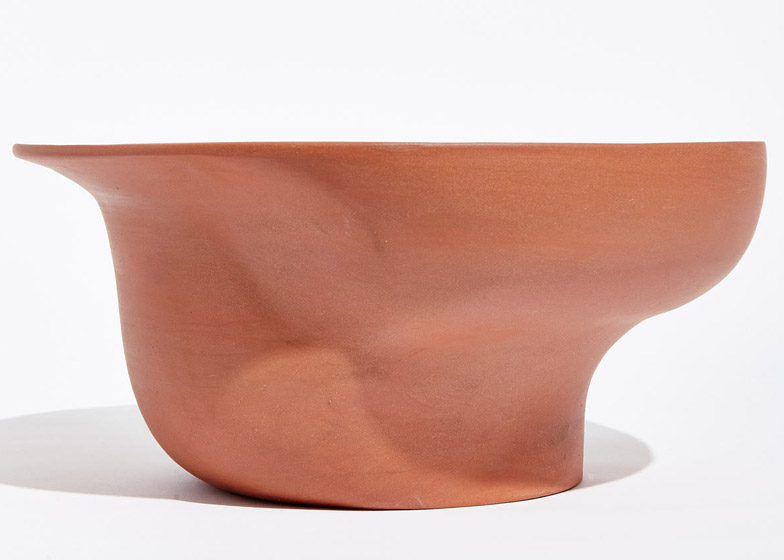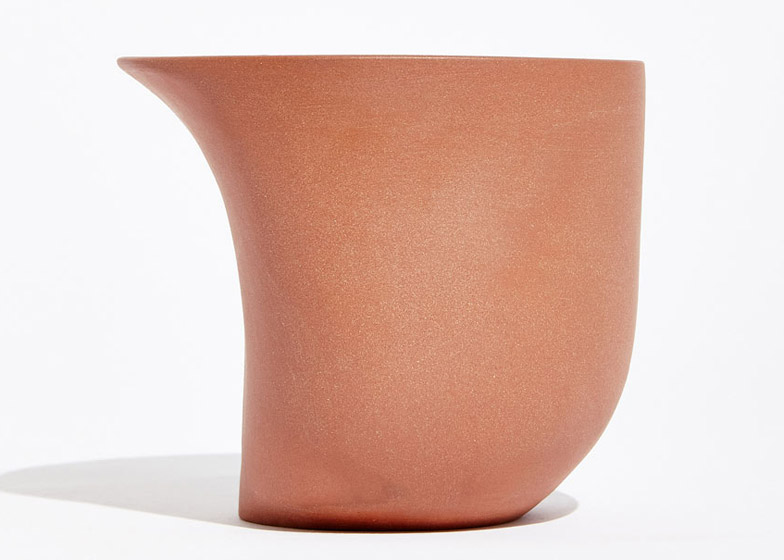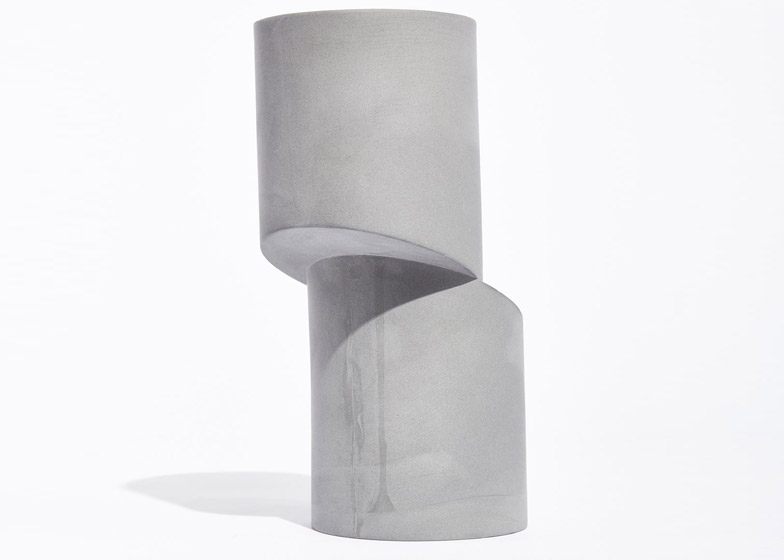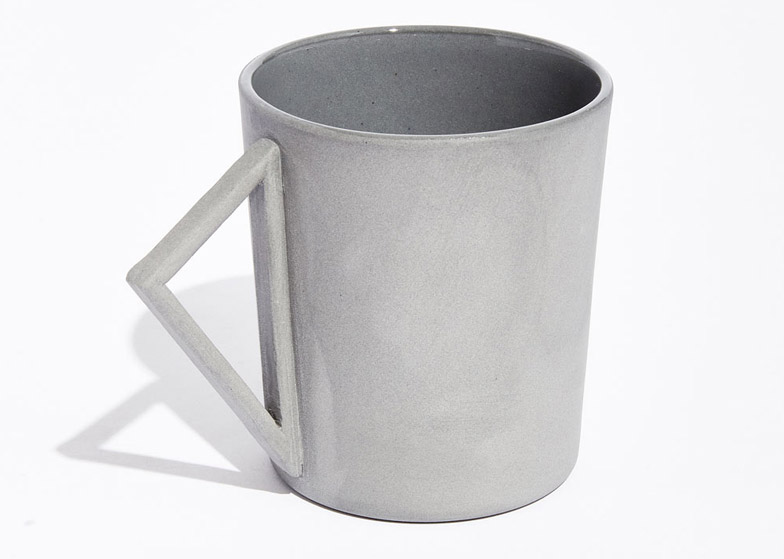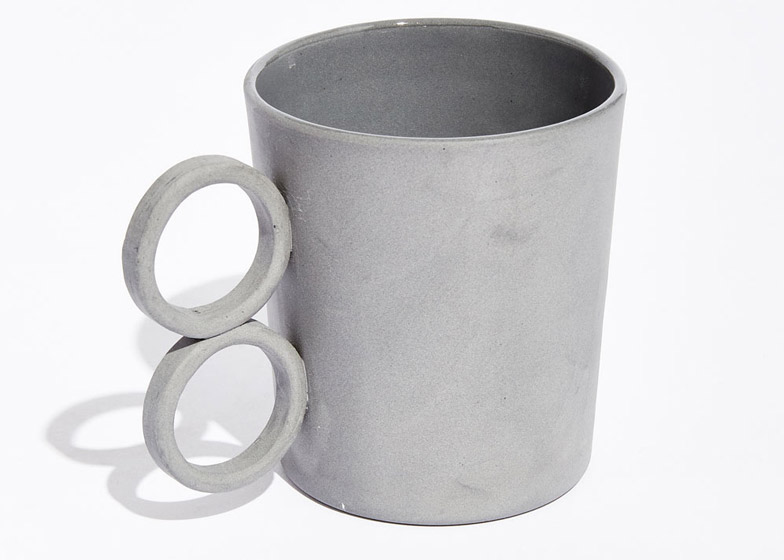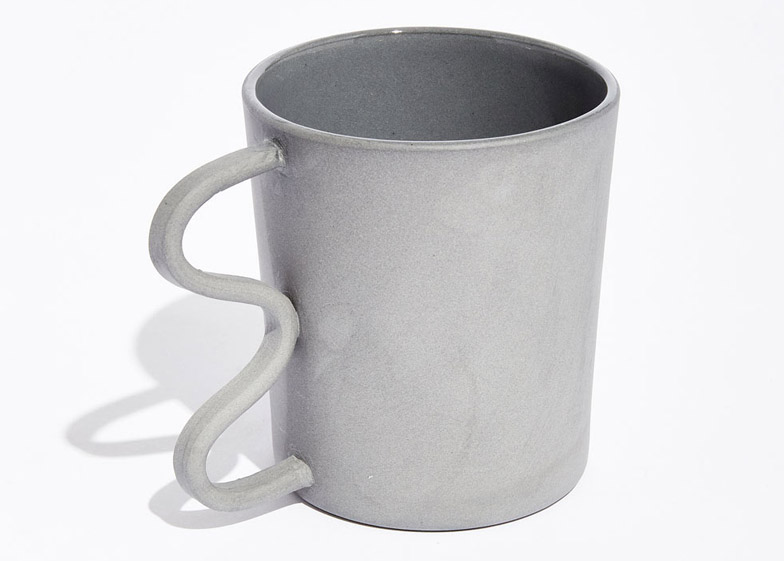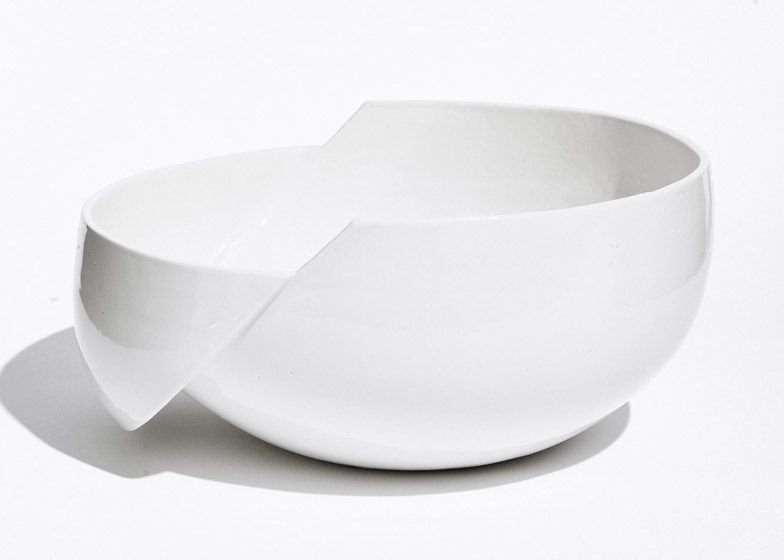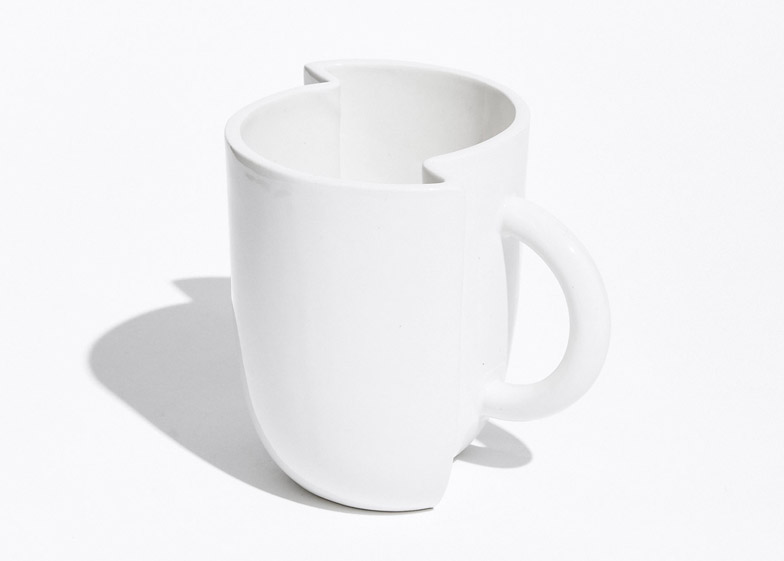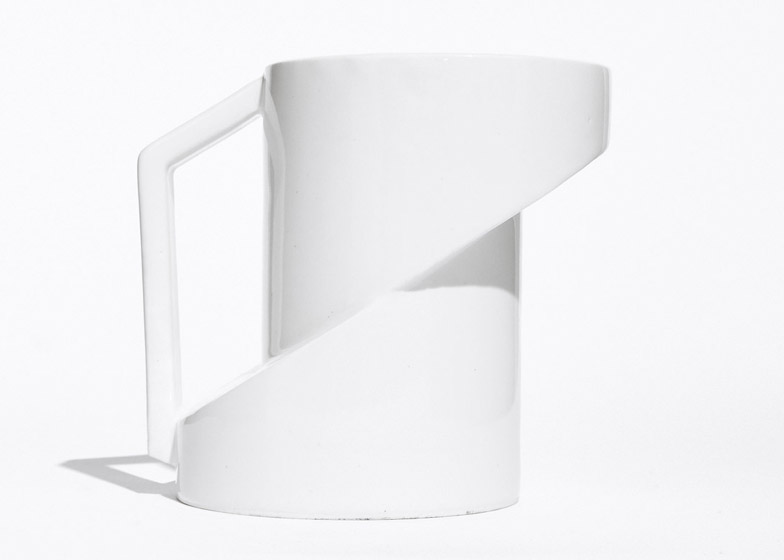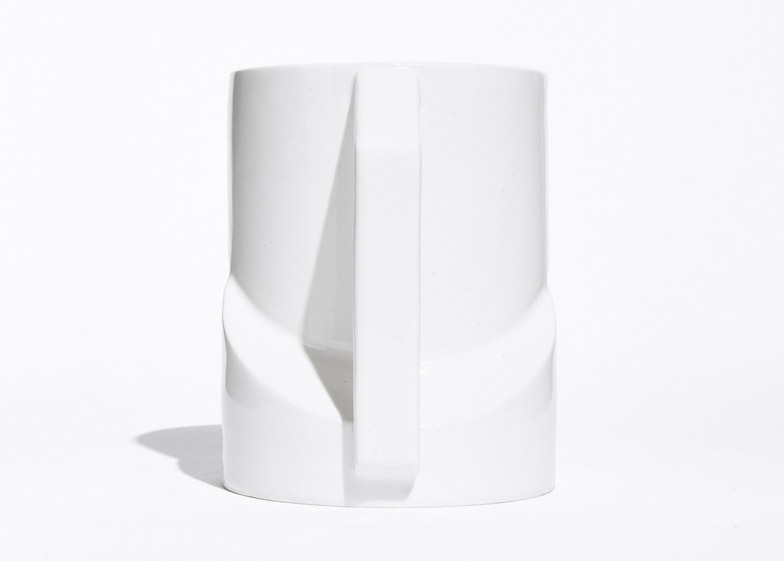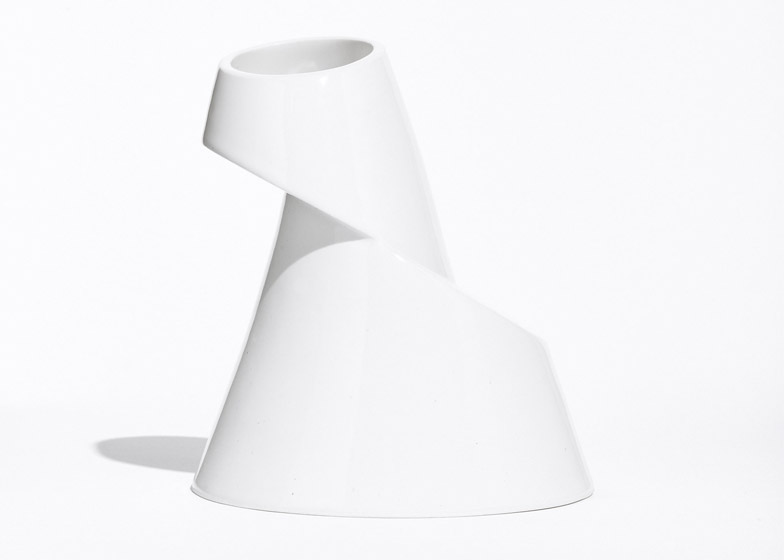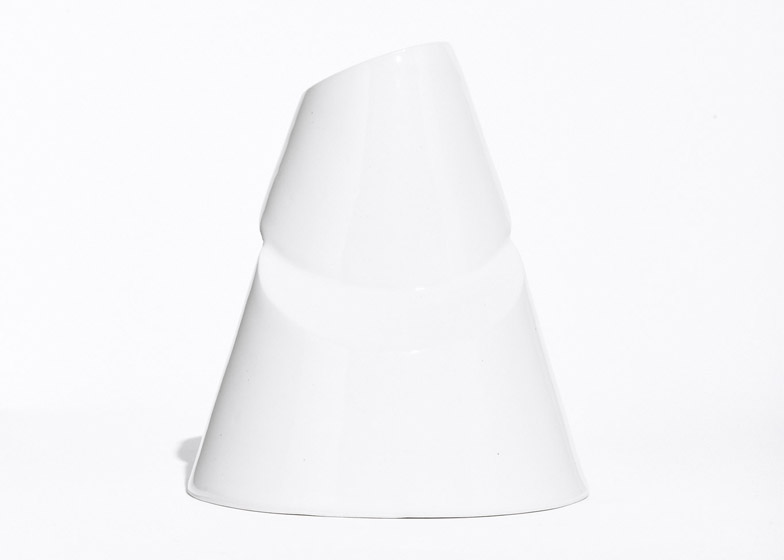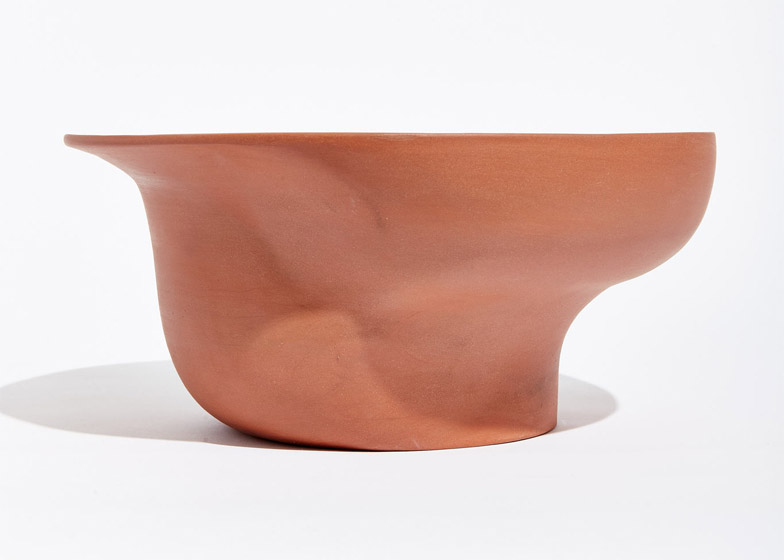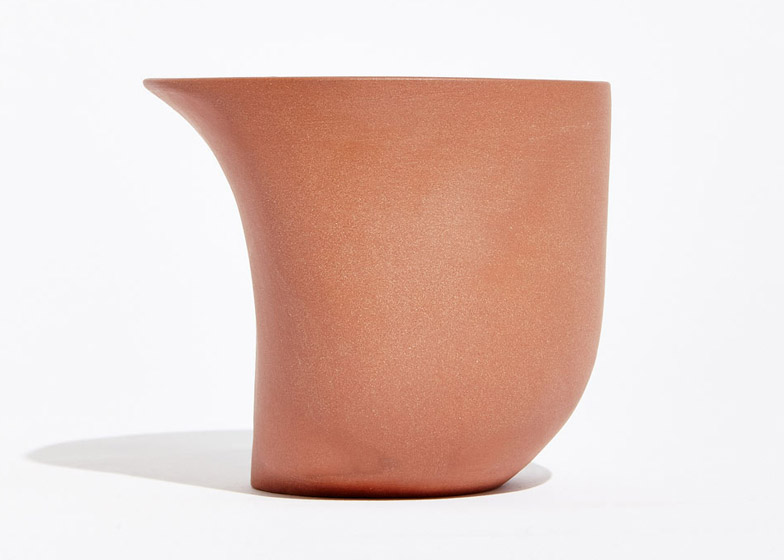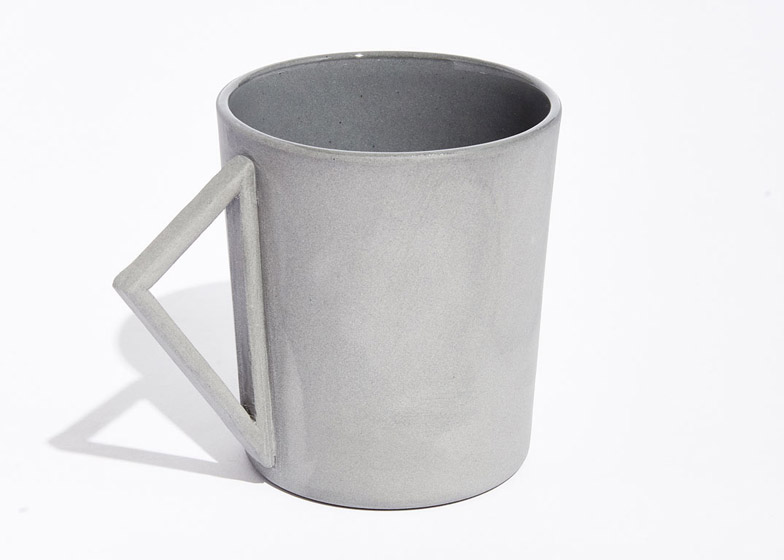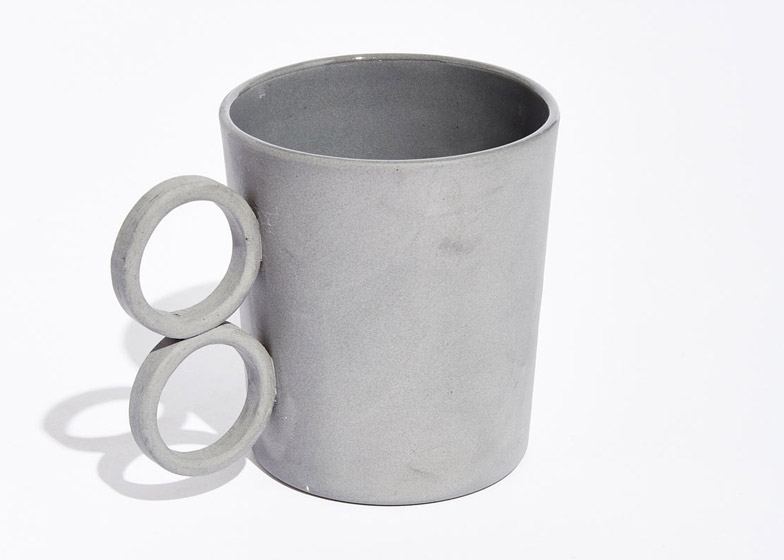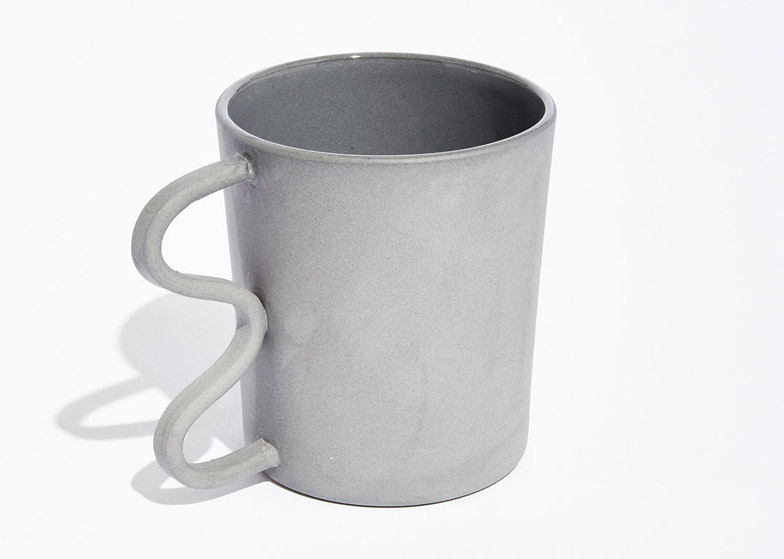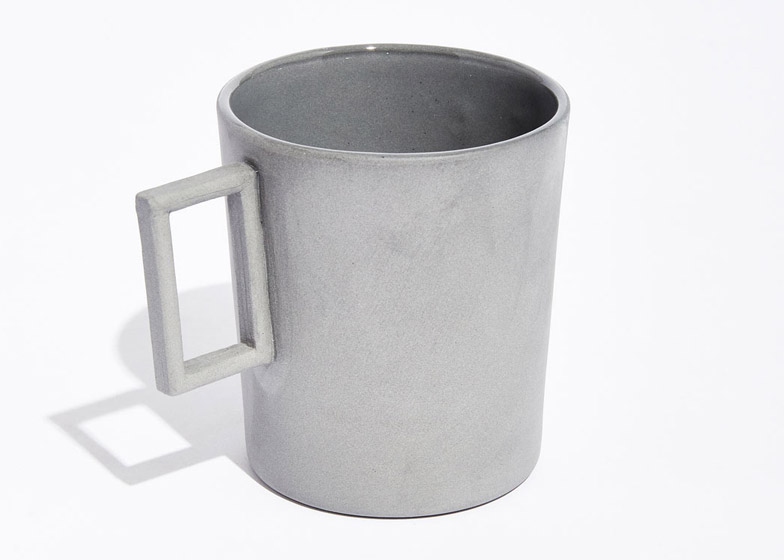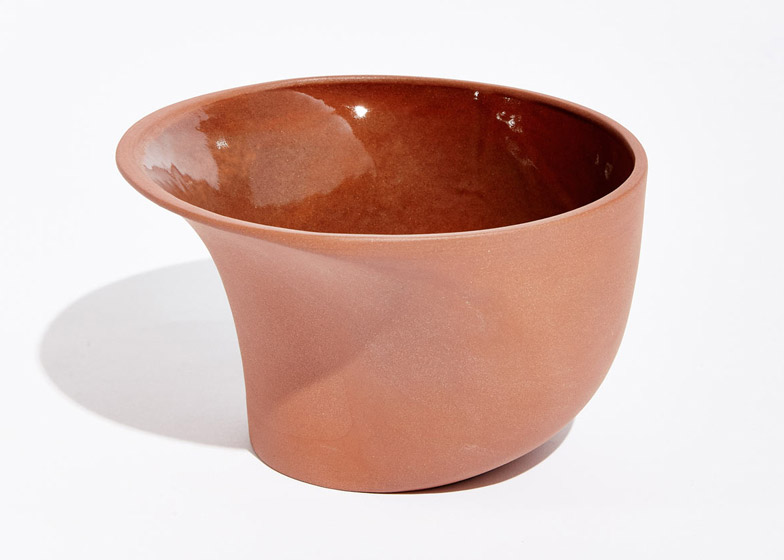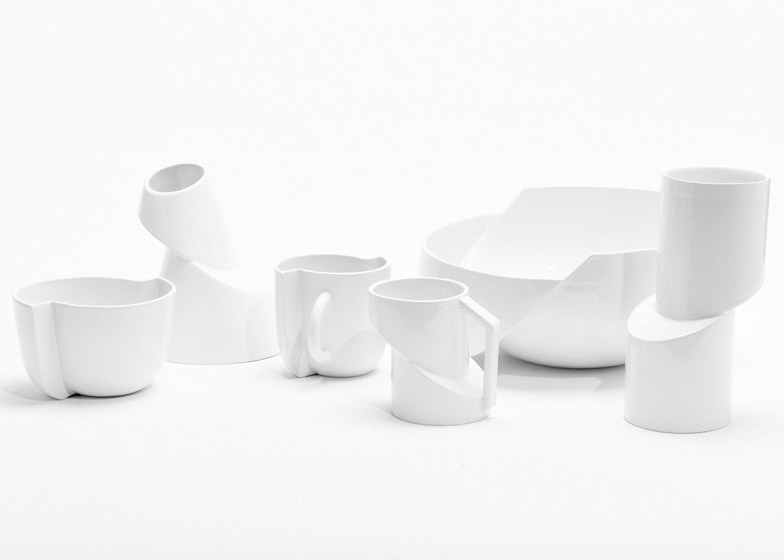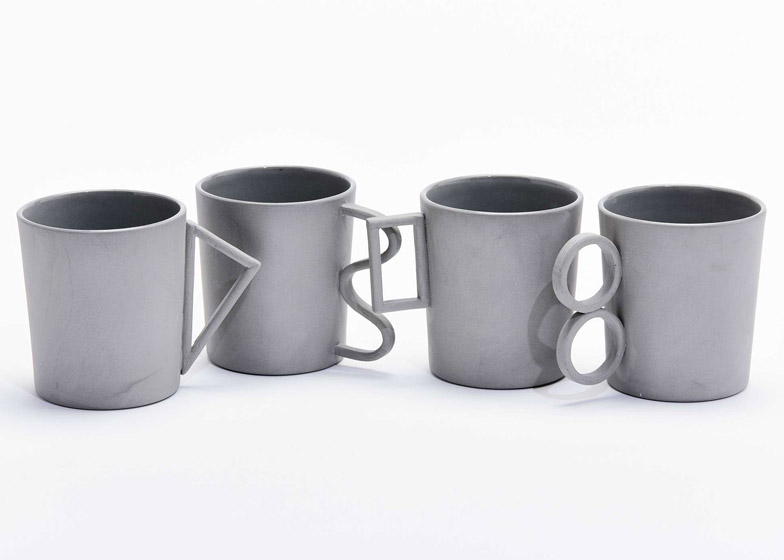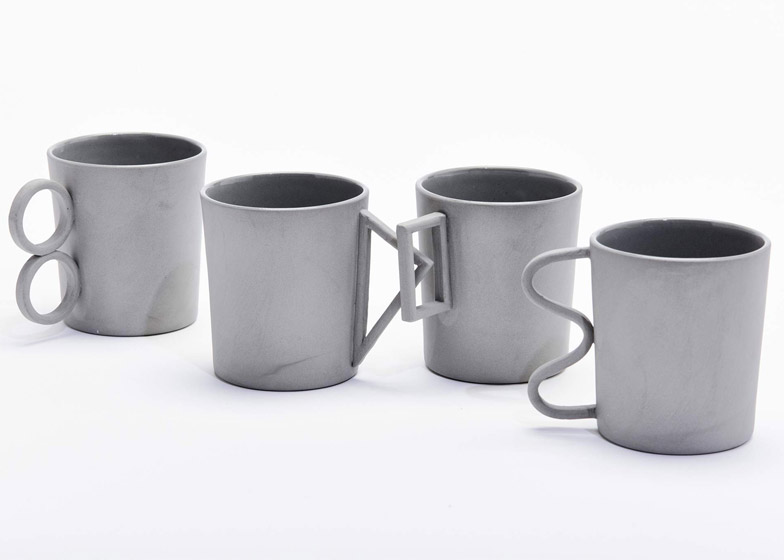Ian Anderson's Philadelphia-based ceramics studio has developed a collection of porcelain tableware by deforming traditional shapes, with the aim to increase, or at least maintain, the functionality of each piece (+ slideshow).
For each piece in Aandersson's latest range, the two halves have been shifted at an angle from one another, with extra edges added where gaps would have formed.
The collection includes a pitcher, of which the top half appears to have slid to one side – making it easier to grip.
On the mug, the negative space left by the shifted section provides an area for the user's hand to fit into the handle.
Anderson quoted a scientific definition of the word "deconstruction" to explain the concept: "To deform a rationally structured space so that the elements within that space are forced into new relationships."
"The latest collection of work explores the idea of deconstruction and the effect it has on common or utilitarian forms," he explained. "Instead of destroying these objects, deconstruction is giving them new meaning as it relates to design and functionality."
Other designers exploring the idea of deconstruction to create new forms include Daniel Weil, who created a collection of clocks with mechanisms suspended from wires within plywood frames for an exhibition at London's Design Museum.
Martino Gamper also deconstructed hundreds of chairs before reconnecting their constituent parts into new seats for his 100 Chairs in 100 Days project.
Aandersson's collection was conceived as an exploration into alternative tableware forms, and a demonstration of the idea that function isn't necessarily dependent on "the number of qualities a form shares with its most basic utilitarian versions."
For this reason functionality was at the forefront of the design process throughout, but the designer also wanted to push users out of their comfort zones.
"The large bowl is a good example of this, where the piece is cut in a way that makes half of the bowl look like it is sliding off and taking a piece of the rim with it," he said.
"The rim in a serving bowl is not as vital to the function of the bowl as the rim of a soup bowl or a coffee cup, for example, and because of that it can be messed with a little more and functionality still maintained."
Despite the collection being widely described as "minimalistic" since its conception, the designer refutes that term.
"My intent was to create forms that existed in opposition to minimalism," he said. "The Minimalist version of my pitcher, for example, would just be a straight tube and I don't find that very interesting."
The white, grey and terracotta colour palette was chosen to emphasise the unusual forms and sharp edges in each piece.
Glazing was applied to the insides only – where it is required for functionality rather than decoration – giving the pieces a tactile, rough external finish.

